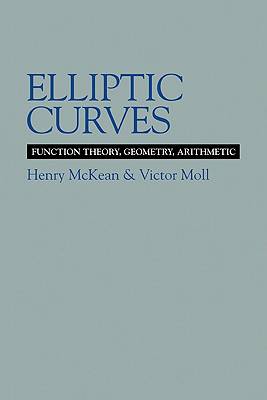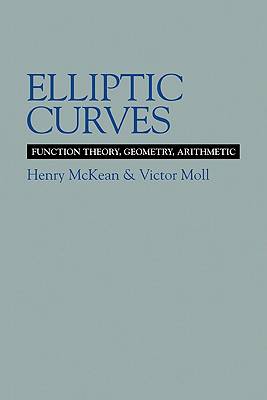
Door een staking bij bpost kan je online bestelling op dit moment iets langer onderweg zijn dan voorzien. Dringend iets nodig? Onze winkels ontvangen jou met open armen!
- Afhalen na 1 uur in een winkel met voorraad
- Gratis thuislevering in België vanaf € 30
- Ruim aanbod met 7 miljoen producten
Door een staking bij bpost kan je online bestelling op dit moment iets langer onderweg zijn dan voorzien. Dringend iets nodig? Onze winkels ontvangen jou met open armen!
- Afhalen na 1 uur in een winkel met voorraad
- Gratis thuislevering in België vanaf € 30
- Ruim aanbod met 7 miljoen producten
Zoeken
Omschrijving
The subject of elliptic curves is one of the jewels of nineteenth-century mathematics, whose masters were Abel, Gauss, Jacobi, and Legendre. This book presents an introductory account of the subject in the style of the original discoverers, with references to and comments about more recent and modern developments. It combines three of the fundamental themes of mathematics: complex function theory, geometry, and arithmetic. After an informal preparatory chapter, the book follows a historical path, beginning with the work of Abel and Gauss on elliptic integrals and elliptic functions. This is followed by chapters on theta functions, modular groups and modular functions, the quintic, the imaginary quadratic field, and on elliptic curves. The many exercises with hints scattered throughout the text give the reader a glimpse of further developments. Requiring only a first acquaintance with complex function theory, this book is an ideal introduction to the subject for graduate students and researchers in mathematics and physics.
Specificaties
Betrokkenen
- Auteur(s):
- Uitgeverij:
Inhoud
- Aantal bladzijden:
- 298
- Taal:
- Engels
- Reeks:
Eigenschappen
- Productcode (EAN):
- 9780521582285
- Verschijningsdatum:
- 28/05/1997
- Uitvoering:
- Hardcover
- Formaat:
- Genaaid
- Afmetingen:
- 161 mm x 237 mm
- Gewicht:
- 585 g

Alleen bij Standaard Boekhandel
+ 400 punten op je klantenkaart van Standaard Boekhandel
Beoordelingen
We publiceren alleen reviews die voldoen aan de voorwaarden voor reviews. Bekijk onze voorwaarden voor reviews.











